Exploring another side of Paris along the world’s most romantic river
Nothing beats taking in the City of Lights than cruising the winding river Seine.
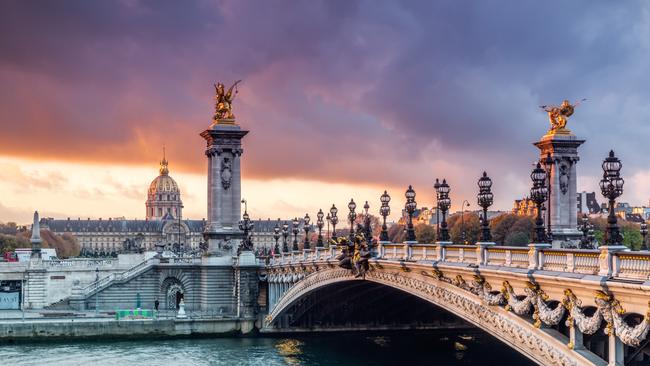
The Eiffel Tower is going off like a giant party sparkler, twinkling against the inky sky, a blue beam shooting from its crown. The spectacle has been on show for five minutes, every hour on the hour, since darkness fell and will continue until one o’clock. It’s a wondrous sight from any angle and at any time, but nothing beats witnessing it from the world’s most romantic river. The Seine, muse to countless artists, poets, singers and lovers, provides dress-circle seats to a show that needs no elaboration. The City of Lights, and the river that winds through it separating the Left and Right banks, is simply beautiful.
The Seine has been crucial for trade, transport and farming for centuries, if not millennia, but it’s in Paris where it feels most magnetic. Among some of the city’s most important sites it passes are Notre Dame (undergoing repairs after 2019’s disastrous fire), Place de La Concorde (where heads rolled during the revolution) and Napoleon’s resting place at Les Invalides. Thirty-seven bridges traverse it, including the oldest, Pont Neuf, constructed in 1607, and surely the most enchanting, Pont Alexandre III, with its gilded winged horses rearing majestically on columns at either end.
But there is much to see along the Seine beyond the city’s boundaries. Spouting from a series of springs near Dijon, it flows northwest for 780km before emptying into the English Channel at Le Havre. This evening’s jaunt on a tourist boat is the dramatic denouement of an abridged version of Viking River Cruises’ Paris to Rouen return itinerary.
It’s the first outing of the season on the new Viking Radgrid, one of eight freshly launched longships that will ply the Seine and the Amstel in The Netherlands this northern summer. Each can accommodate 168 passengers in 84 staterooms, ranging across five categories from standard rooms with smallish windows to the expansive two-room Explorer Suites. There’s been pomp, ceremony, smashed bottles of Scandinavian fire water aquavit, and a slap-up dinner in a flashy 1st arrondissement venue to celebrate their christenings. The next day, it’s time to hit the water.
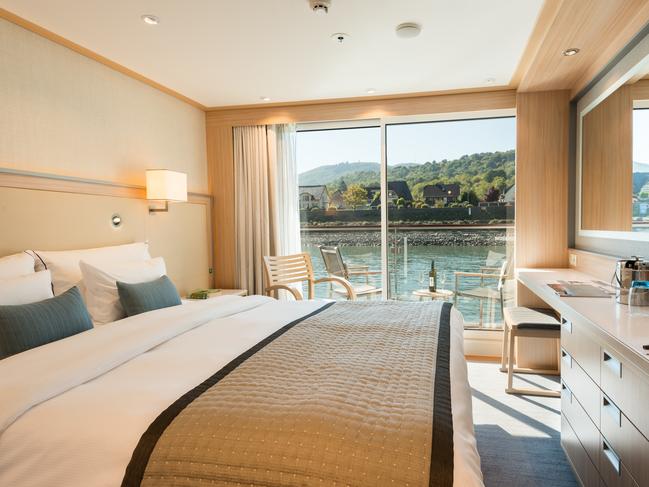
The ship departs the cruise line’s specially built dock at Pont de Grenelle, just a 20-minute stroll from Gustave Eiffel’s masterpiece, around midday as we dine on garlicky mussels and creamy broccoli soup. The riverbanks are lined with houseboats, a hodgepodge of dingy wrecks side-by-side with elaborate barges boasting barbecue terraces and designer interiors. I watch the world pass by from the indoor-outdoor Aquavit Terrace at the bow, snuggled under an alpaca blanket. Other guests are on the top deck, another great viewing spot with loads of sun lounges, shaded areas and a walking track for those with restless feet.
Gradually, the scenery changes from urban to semirural as the ship, powered by hybrid diesel-electric engines, glides almost silently towards Le Pecq on Paris’s outskirts. From here, it’s a short coach ride to St Germain-en-Laye, a well-heeled commune where royalty once holidayed and hunted, staying in a castle that dates from the 12th century. Louis XIV, the Sun King, was born here in 1638, while the likes of Alexandre Dumas, of Three Musketeers fame, and composer Debussy have called the town home. We wander the maze of streets, admiring shop windows dressed with perfect rows of candy-coloured macarons and cheese so pungent the smell seems to penetrate the glass.
Back on board Radgrid, named after one of Odin’s warrior-women Valkyries, a pianist is playing jaunty jazz in the convivial lounge as passengers sip aperitifs. We have a choice of dinner venue – the formal restaurant or the more casual Aquavit Terrace. Both are kitted out in the understated but elegant Scandi style for which Viking is known. There’s a choice of “classic dishes” available at every sitting, including rib eye steak or poached Norwegian salmon, plus a trio of regional specialties or the dinner menu, accompanied by the sommelier’s selection of wine. Decisions, decisions. The wait staff, mostly eastern Europeans, are a jovial bunch, and adept at tempting passengers to consume many more calories than they could possibly burn.
It’s a dangerous situation when the post-dinner experience is a tasting from renowned cheesemaker and monger Bernard Antony, who supplies his wares to 19 Michelin-starred restaurants and has prepared platters for royalty and heads of state. Concerned about disrupted sleep caused by an over-indulgence on comte, another guest and I ask our host about his belief in “cheese dreams”. He seems bemused by the question and answers categorically, “Non”. He must be right; I sleep soundly in the king bed of my veranda stateroom, with its calming palette of cream, blond wood and smoky blue.
Waking to a bucolic dawn, I venture out on to the private balcony to find the glassy river reflecting a pink sky striped by vapour trails.
We have sailed during the night to La Roche-Guyon, a picturesque hamlet officially recognised as one of the most beautiful villages in France. It’s dominated by a castle that has gleaming limestone cliffs at its rear and the remnants of a 12th-century keep where birds whirl in the morning sunshine. In the 1700s, an experimental potager for the chateau was planted on the river flats. Our guide, Arianne, recalls seeing it as a child when it was neglected and overgrown – “a vision of nightmare”. Thanks to the discovery of a booklet from 1741 that mapped the plantings in detail, the garden has been restored to its geometrical glory, with neat rows of pear, plum and apple trees and tidy organic vegetable plots.
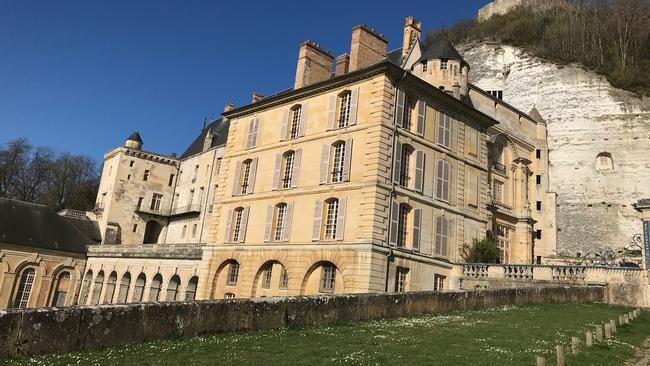
The chateau has been in the hands of the noble La Rochefoucauld family since the beginning, and members still reside here. It encompasses everything from Norman caves and medieval towers to a Renaissance mansion and grand stables modelled on those of Versailles. Likewise, its history is a mixed bag. One duke was expelled from court and sent back here after criticising Louis XV’s dalliances. A duchess had a 30m-high artificial waterfall carved into the hillside. Why? Presumably because she could. During World War II French soldiers blew up a nearby bridge to stop the German advance, but over-egged the charge, shattering the chateau’s windows. Which brings us to the castle’s most notorious resident. Erwin Rommel made his headquarters here in 1944 while in charge of Germany’s Atlantic Wall defences. The general knew the war was lost, and it’s believed the assassination plot that almost brought Hitler undone was discussed within the chateau walls. Three days before the bomb meant to destroy the Fuhrer exploded, Rommel’s car was strafed by the Allies and he was seriously injured. He recovered just in time to be handed a cyanide pill by the Nazis and told, “You know what to do.”
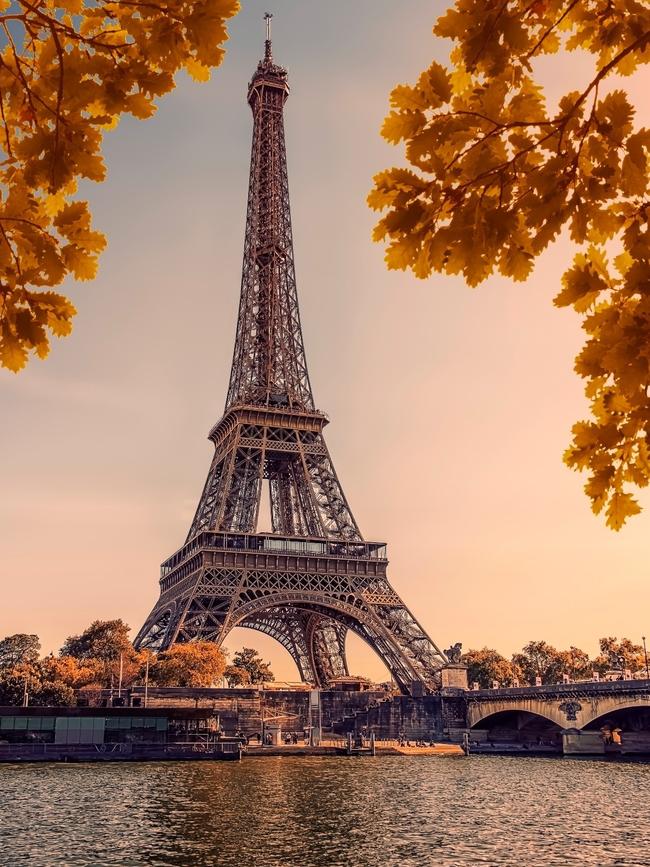
We climb the 272 deep steps through a hidden tunnel to the top of the keep, our exertions rewarded with stunning bluebird views across the village and garden to the Seine. Chalky white outcrops jut out of the valley at regular intervals, like sentries keeping a close eye on comings and goings, just as the chateau guards would have done for hundreds of years. In the afternoon we pull into Vernon, best known for its proximity to the village where Impressionist master Monet lived from 1883 until his death in 1926. A local operator has lined up bicycles in perfect formation on the riverbank. They have well-padded seats suitable for rumps of a certain age, and baskets crying out for a baguette, a bottle of red and a bouquet.
A flat, easy cycle path offers the ideal way to reach the utterly charming village of Giverny (a bus is also on offer). Sadly, spring has not yet sprung in Monet’s gardens, which are yet to open. Our consolation is to cycle to the familiar bright green doors of his garage and see the window of his bedroom through which he found inspiration. We visit his grave in the churchyard and take a tour of the Museum of Impressionism, which has an exhibition drawing a somewhat tenuous link between Giverny’s favourite son and abstract artist Mark Rothko. En route back to the ship, there’s a riverside pit stop for local cider, macarons and cheesy bread, immediately negating any calorie credits we might have earned via pedal power.
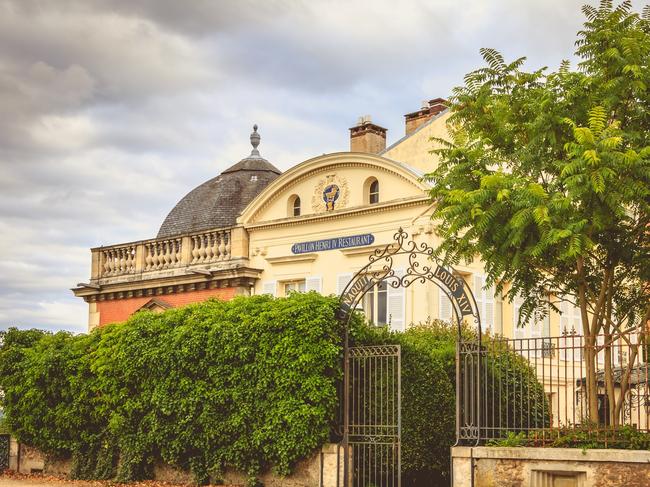
Under normal circumstances, our journey would continue to Rouen, with its famous cathedral, for excursions to Normandy’s D-Day beaches and Les Andelys. Instead, we sail back to Le Pecq while being introduced to the delights of Camus cognac in another post-dinner diversion.
It’s only 20 minutes by bus from the ship to the Palace of Versailles, the former hunting lodge Louis XIV transformed into an extravagant display of wealth and privilege. Guide Carmen fills our heads with facts and entertaining anecdotes about Louis XIV, XV and XVI as we wander from salon to salon.
In the Apollo Room, she points to a painting of Le Roi Soleil, draped in an enormous fleur-de-lys cape, his dancer’s legs proudly on display, his feet in fashionable red high heels, his head topped with a towering wig. “The first drag queen of France,” she says with a laugh.
It wasn’t all Champagne and croquet, however. Carmen describes the lack of privacy endured by the monarch, whose every day was dictated by a strict regimen and rituals. Who needs the paparazzi when you have 100 people watching you get out of bed?

If the Sun King’s great-great-great grandson had owned a mobile phone, it’s unlikely he would have written “Rien” (“Nothing”) in his diary on July 14, 1789. His device would have been pinging incessantly about an angry mob at the Bastille. We all know what fate awaited him and his wife, Marie-Antoinette, 3½ years later in Paris.
Along with the disgraced king, almost 1200 people faced the guillotine in Place de la Concorde. Near where the scaffold stood for Citizen Louis Capet, as he was known by then, on January 21, 1793, there is now an ornate fountain dedicated to the Rhone and Rhine and the spirits of river navigation, farming and commerce. I can’t help but wonder if the king gazed wistfully on the Seine for the last time before meeting his maker.
Penny Hunter was a guest of Viking River Cruises.
IN THE KNOW
Viking River Cruises operates the eight-day Paris & the Heart of Normandy until November 6; from $3495 a person, twin-share. Book by May 31 to save $1000 per couple plus get a $1000 flight credit. Includes all meals and a choice of one shore excursion in each port of call.
All passengers on Viking cruises must be fully vaccinated. During my voyage, masks were required while walking around the ship but could be removed once seated in the lounge or restaurant. Masks became optional on April 1 but still required to be worn by crew. Passengers must submit a saliva sample for testing each morning.


To join the conversation, please log in. Don't have an account? Register
Join the conversation, you are commenting as Logout